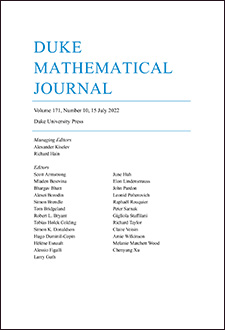Fix a bounded domain , a continuous function , and constants and with . For each , let be the value for player I of the following two-player, zero-sum game. The initial game position is . At each stage, a fair coin is tossed, and the player who wins the toss chooses a vector to add to the game position, after which a random noise vector with mean zero and variance in each orthogonal direction is also added. The game ends when the game position reaches some , and player I's payoff is .
We show that (for sufficiently regular ) as tends to zero, the functions converge uniformly to the unique -harmonic extension of . Using a modified game (in which gets smaller as the game position approaches ), we prove similar statements for general bounded domains and resolutive functions .
These games and their variants interpolate between the tug-of-war games studied by Peres, Schramm, Sheffield, and Wilson [15], [16] () and the motion-by-curvature games introduced by Spencer [17] and studied by Kohn and Serfaty [9] (). They generalize the relationship between Brownian motion and the ordinary Laplacian and yield new results about -capacity and -harmonic measure





